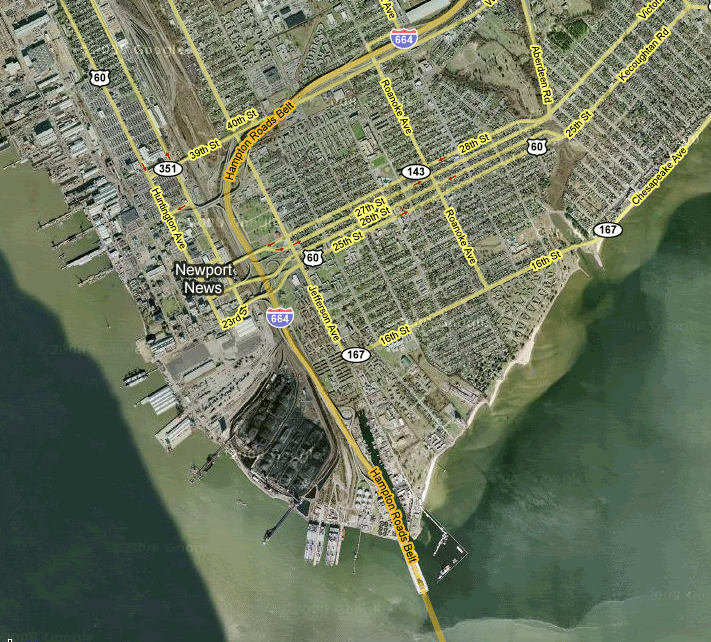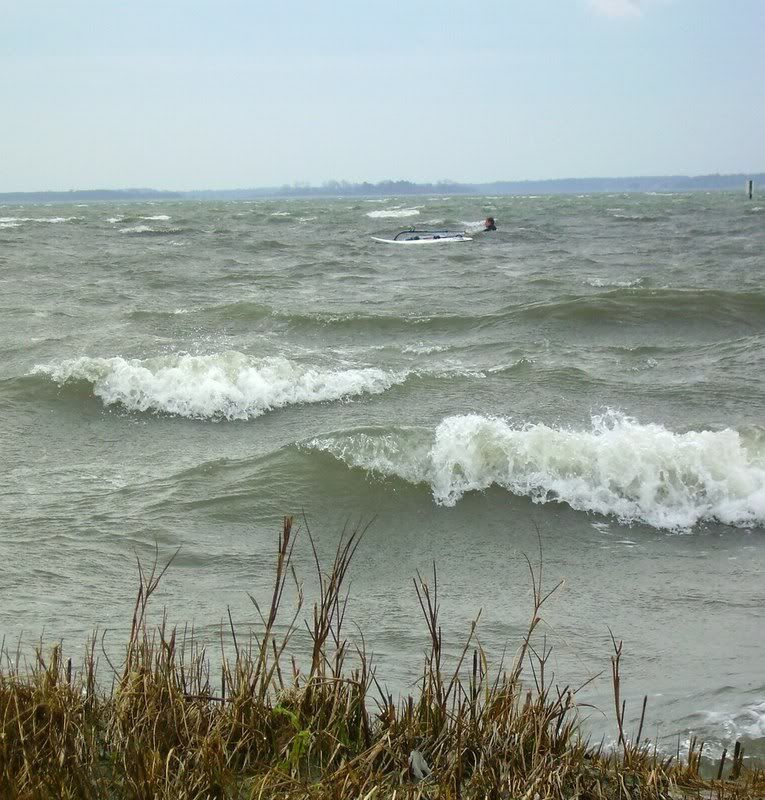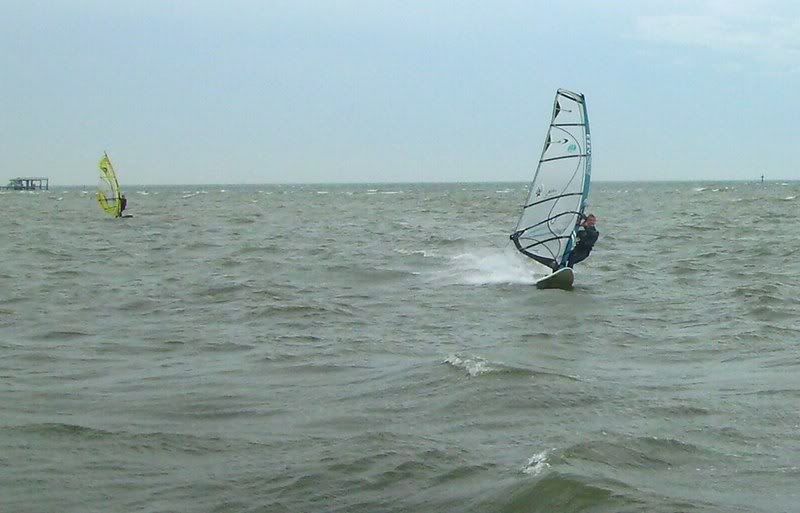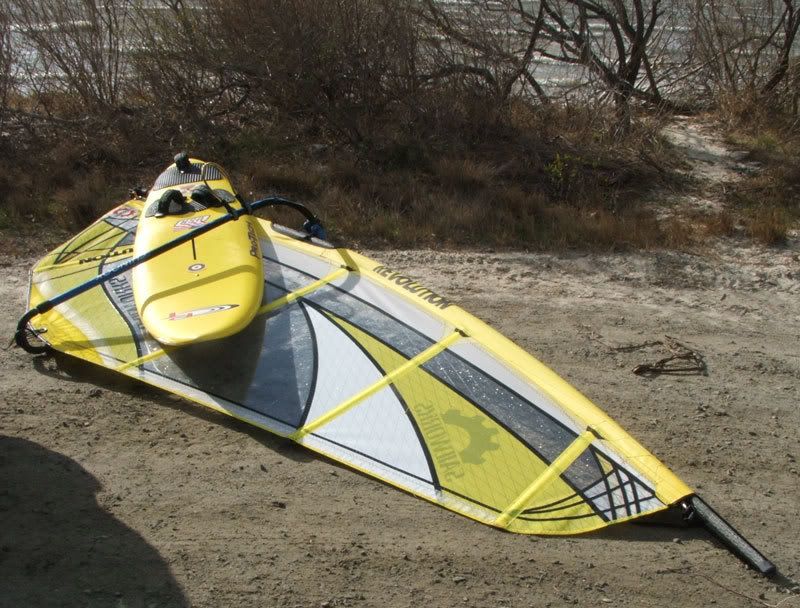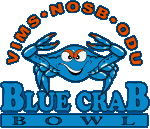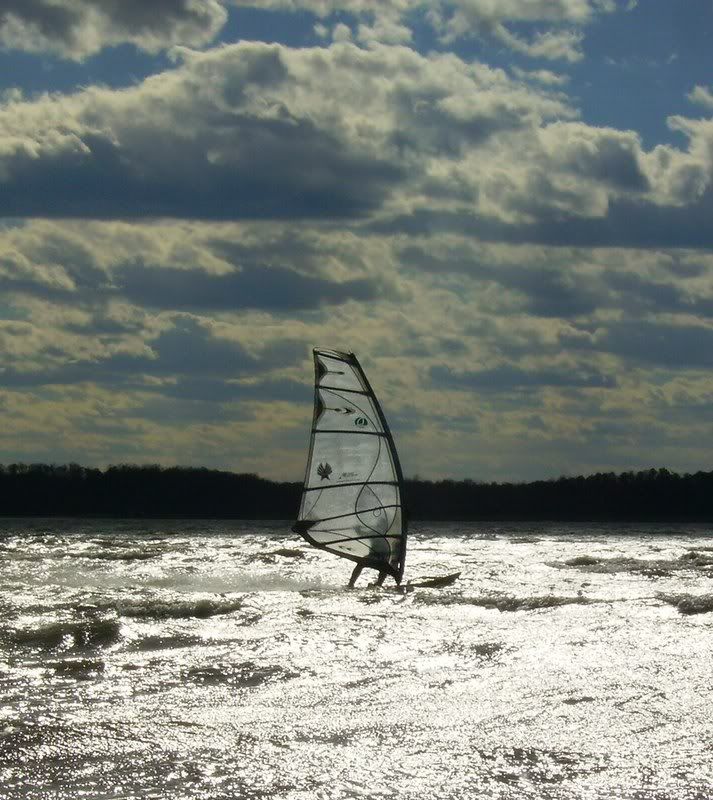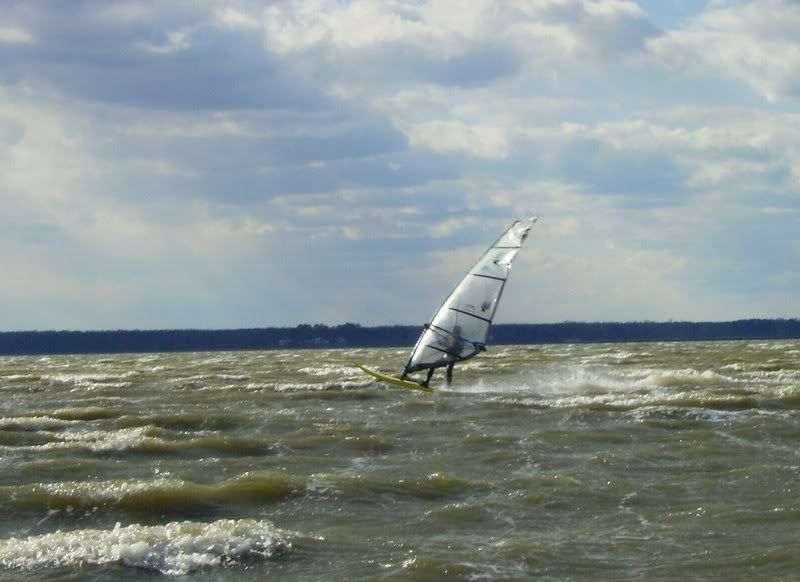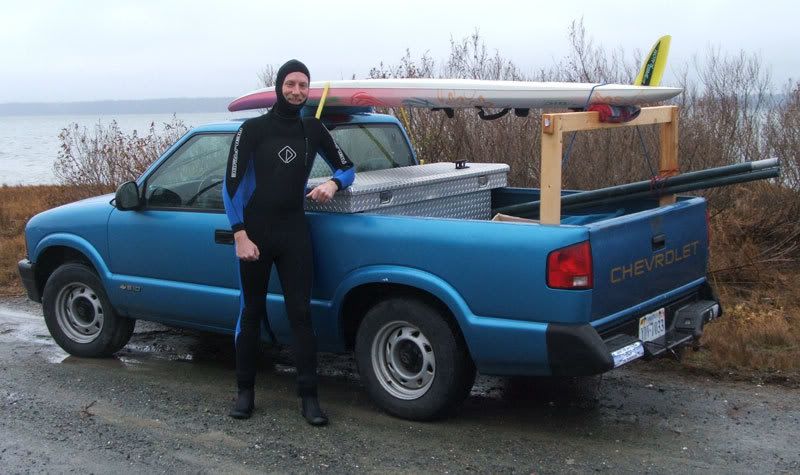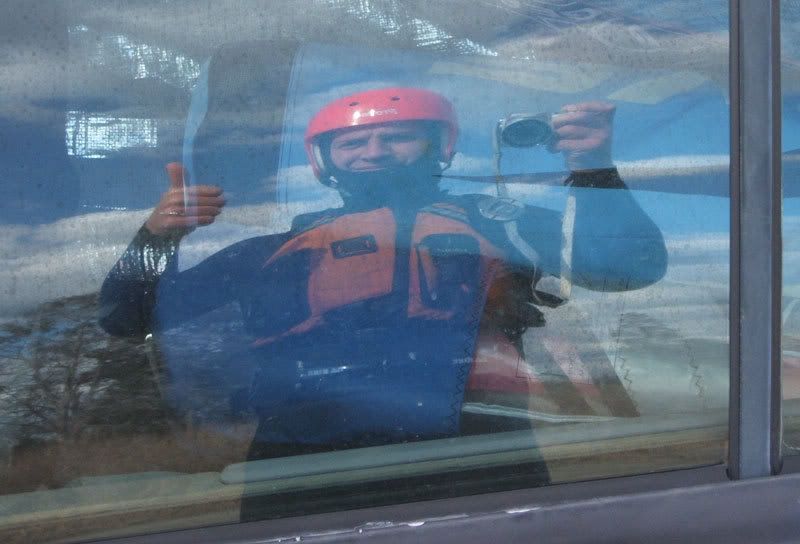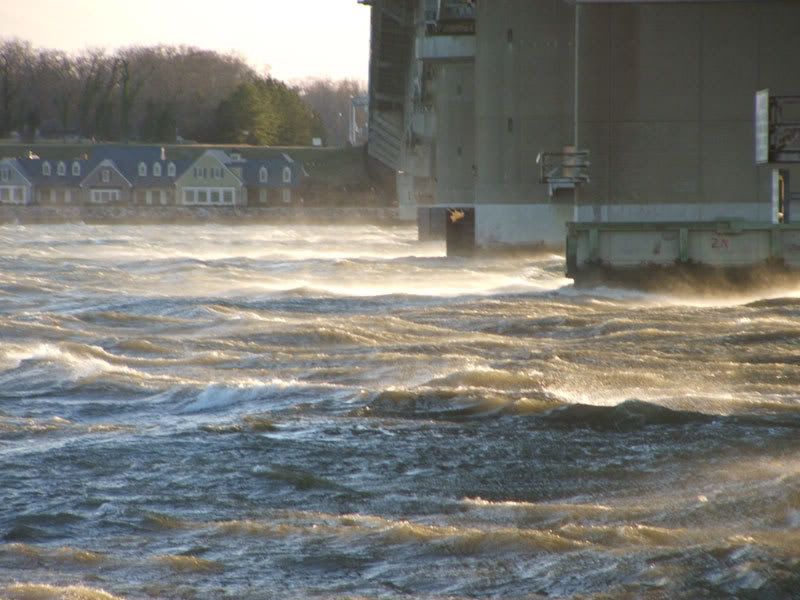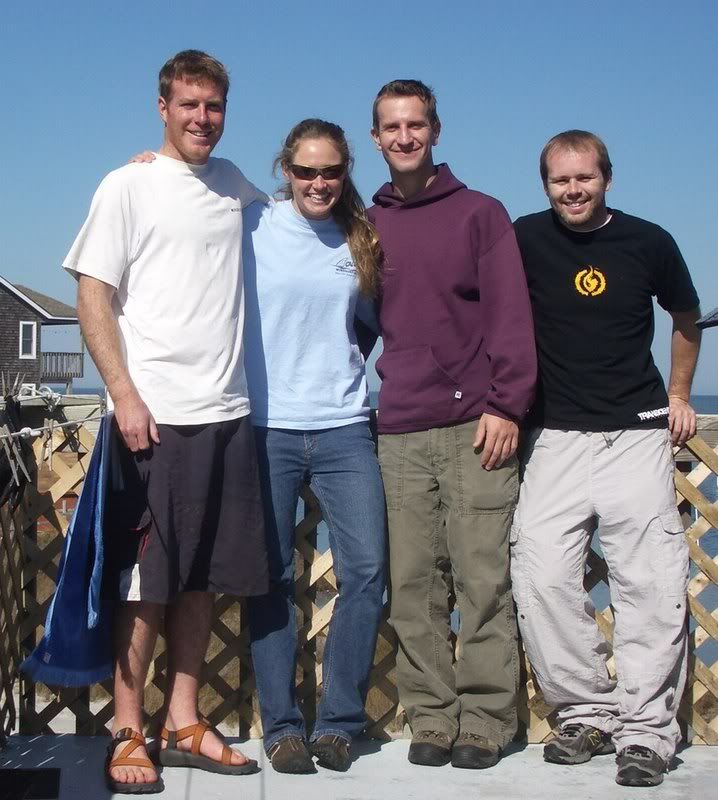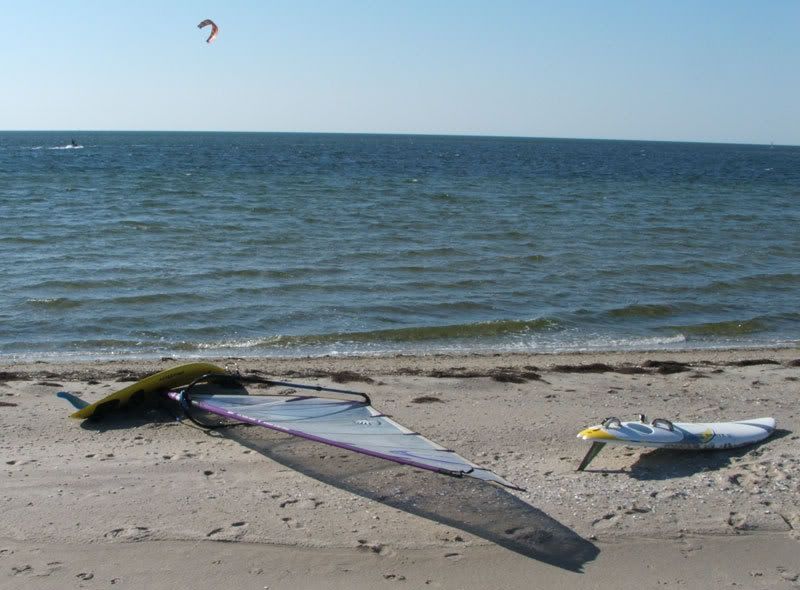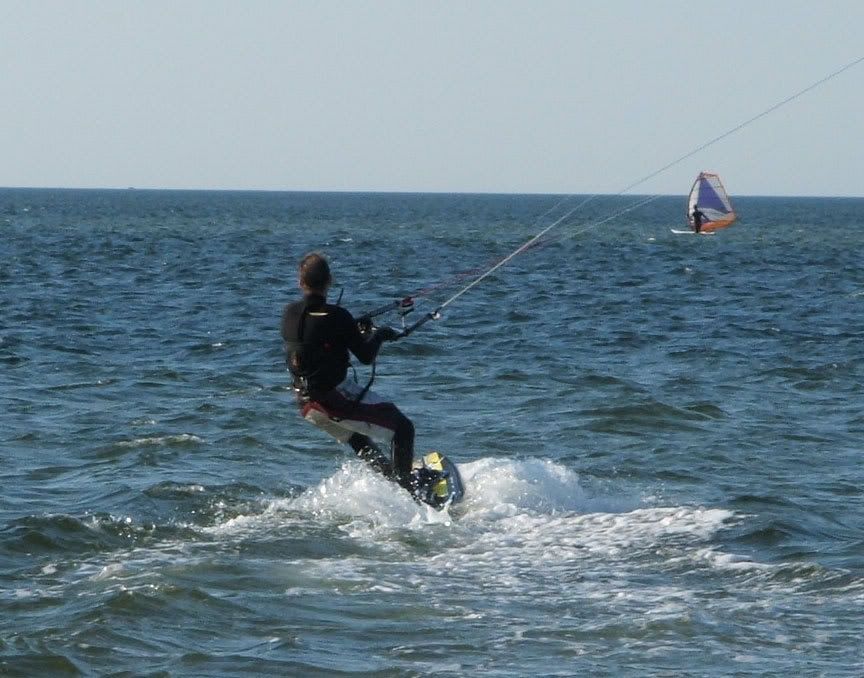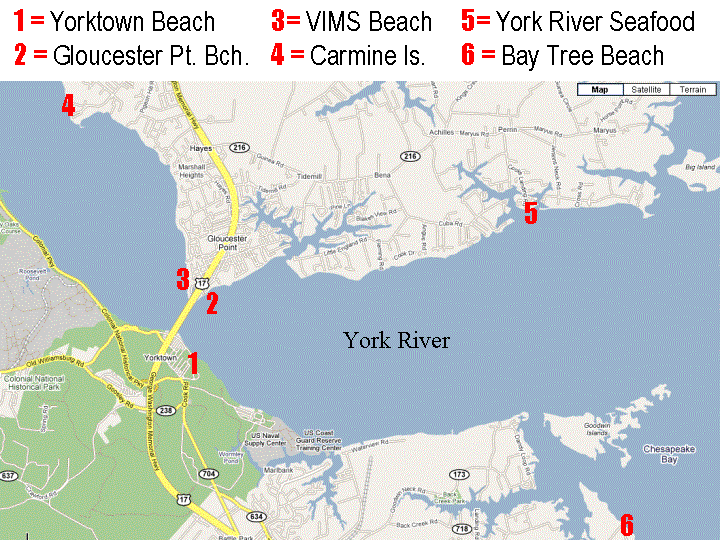**Note1: For the most basic introductory information about what windsurfing is, check
this post first.
**
**Note2: For a windsurfing guide specificially for POOR PEOPLE, check
here**
**Note3- If you are looking for my automatic windsurfing equipment calculator spreadsheet, it can be accessed online at
this link.
**
BEGIN POST-
This post is intended for beginner or intermediate windsurfers who have lots of questions about the sport and the equipment. These 18 questions pop up perennially on
windsurfing bulletin boards. By answering them here, I hope to save myself and other helpful-advice-givers some time in the future. If you have additional FAQs or you'd like to add to my answers, leave a comment. Also, there is some additional and overlapping information under the "information" tab on the
windance website, and in this
powerpoint presentation.
Question #1- I'm just starting. Should I take a lesson?
Answer- Yes. While it is POSSIBLE, to teach yourself or to learn from a friend, a lesson from an experienced instructor will be fun and will save you loads of time and frustration. In other words, your first purchase as a new windsurfer should be a lesson. If lessons are not offered in your area, consider a windsurf vacation in a place with warm, shallow water, such as the Outer Banks of North Carolina or the Caribbean Island of Bonaire.
Question #2- I’m a beginner windsurfer looking for my first board. What kind of board should I get?
Answer- A BIG one with plenty of volume for flotation and a retractable daggerboard for going upwind and downwind easily. (The daggerboard is like the keel of a sailboat; it provides stability and helps maintain a heading against the wind, but it creates drag on the center of the board and therefore must be retracted in stronger winds to access the high-speed mode of windsurfing known as "planing".) Refer to the “board size” tab on the windsurfing equipment calculator to find the volume that is appropriate for your weight. Besides ample volume and a daggerboard, a padded deck is a nice feature for a board that you will be clambering around on a lot.
Question #3- What’s the difference between a shortboard and a longboard? Can I learn on a shortboard?
Answer- There is a lot of overlap in length, so the best way to tell the two types of boards apart is the presence of a daggerboard: Longboards have daggerboards and shortboards do not. Although some shortboards are big enough to float a beginner, they are not appropriate for learning or for sailing in light winds because they lack the stability and directional control conferred by a daggerboard. A beginner on a shortboard will tend to drift downwind and not be able to get back where he or she started from. Special beginner boards, like the
Starboard START, are very short and wide, but are nevertheless "longboards" because they have a daggerboard to enhance their light wind performance.
Question #4- What are the pros and cons of narrow longboards versus wide beginner boards?
Answer- Any board with enough volume will keep you afloat, but the way the board's volume is distributed (short and wide versus long and narrow) significantly affects its sailing performance. A short, 100 cm wide board will be more stable and easier to learn on than a long, 70 cm wide board. However, the long, narrow one will cut through the water faster when sailing in light winds. This is known as "displacement mode" sailing. When the wind is stronger, boards transition from displacement mode to "planing mode" where they start skimming on top of the water. The short, wide board will transition to planing at a slightly lower wind speed, but the long board will transition more smoothly and will be easier to control in high wind. Another advantage of a long, narrow windsurf board is that it can be used as a
stand-up paddle board when there is no wind at all.
Note: In consistently windy areas like the Columbia River Gorge, some people advocate transitioning to a big shortboard instead of to a longboard after learning on a wide beginner board. The traditional (1) versus the high-wind-area (2) routes of progression and board acquisition are illustrated in the figure below.
 Question #5- What are the advantages of big versus small boards? If I get a big board, will it hold me back?
Question #5- What are the advantages of big versus small boards? If I get a big board, will it hold me back?
Answer- A big board will not hold you back. All the intermediate level windsurfing skills (harness, footstraps, planing, beach start, water start) will be learned faster on a big board than a small board. And most big boards nowadays have good performance in a wide range of winds, including light winds, which small boards suck in. The main reason small boards are popular with skilled windsurfers is that, when it IS windy enough to use them, they are fast, maneuverable, and “light” feeling. Also, in very strong winds and rough waters, small boards stay in control better than large boards.
Question #6- I’m a beginner windsurfer looking for my first sail. What kind of sail should I get, and in what size?
Answer- You should get a sail between 2 and 7 meters squared, depending on your size and the wind speed you are likely to sail in most often. Check the windsurfing equipment calculator to see what’s right for you (pink line on chart). As you get better, you can start using sails closer in size to those recommended for experienced sailors (blue line on chart). Your first sail should have a minimum of 3 and a maximum of 6 battens, and should have no camber inducers or “cams” on any of the battens. Also, avoid sails and masts made before the year 2000 and sails advertised for racing.
Question #7- What kind of wetsuit and accessories do I need?
Answer- If the water is colder than 75 degrees Fahrenheit you will need a wetsuit of some sort. For 70-80 degrees water temperature you can use a short-sleeve wetsuit, but for less than 70 degrees water temperature I recommend a full length wetsuit. For 60-70 degrees water, about 3 mm thickness is sufficient. For 50-60 degrees water 5 mm thickness is better, and you may wish to add booties, gloves, and a hood, depending on the air temperature. Below 50 degrees you will want a very thick wetsuit or drysuit, and booties, gloves and hood are essential. A life vest is good to have for windsurfing, especially if you aren’t wearing a thick, floaty wetsuit. Kayaking life vests are the best because they leave the midriff bare for your harness. Integrated vest-harnesses are also available.
Question #8- What size sail, board, and fin do I need to “plane” in X amount of wind? Or, given a sail of size X, how much wind do I need to plane?
Answer- Check the windsurfing equipment calculator for the recommended sail size, and then check the calculator for the recommended fin size for that sail. Next, you need to see if your board is appropriate for that size of sail and fin. The fin and sail size ranges for a particular board are usually printed on the board or listed on the board manufacturer’s website. If not, you can go by the following rules of thumb: 1) A longboard can use almost any size sail. 2) As far as shortboards go, 50-60 cm wide ones suit 3-6 meter squared sails, 60-70 cm wide = 5-8 m^2, 70-80 cm = 6-9 m^2, 80-90 cm = 7-10 m^2, and 90-100 cm = 8-12.5 m^2. 3) The maximum fin length that a board can accommodate is about the width of the board under the back footstrap(s), and the minimum length is about 2/3 of that.
Question #9- What kind of harness should I get?
Answer- A waist harness is the simplest and best for most people. However, if you have back problems or you want to do serious racing, you may prefer a seat harness.
Question #10- I’m having trouble using the harness- what’s wrong?
Answer- It’s a problem with conditions, equipment, tuning, or technique. :) Conditions are the easiest to rule out; if the wind is too light to lean back against the pull of the sail, it’s probably too light to use the harness. Next is equipment; make sure if you’re using a waist harness you have relatively short lines, and if you’re using a seat harness you have longer lines. Tuning is harder to address; the best way is to have a better windsurfer than yourself ride your gear and set the boom height and harness lines where they belong. If no one else is around, just experiment on your own. Technique is a big issue, too. I won’t go into too much detail, but just make you can sail comfortably with your harness hook CLOSE to the harness lines before you try to hook in. If you have to make sudden, drastic changes to your sail or body position to reach the harness lines, then you will probably crash after you hook in.
Questions #11- How do I get planing?
Answer- First make sure that there is enough wind for your sail size (but not too much wind) by asking other windsurfers or referring to the windsurfing equipment calculator. If you're on a longboard make sure the daggerboard is completely up, because you can't plane with the daggerboard down. Then accelerate by sheeting in and transferring your body weight to the power of the sail. As you accelerate, keep steady
mast base pressure" so you can move your feet back and out towards the footstraps without sinking or tilting the back of the board. Turning downwind slightly and riding a little wave can help you get going, as can pumping the sail to generate power and lurch the board over the initial threshold.
Question #12- Every time I try to get in the footstraps I crash or the board rounds upwind. How do I fix that?
Answer- Again, this could have to do with conditions, equipment, tuning, or technique. The most obvious indicator that conditions are unsuitable for footstraps is that there isn’t enough wind to plane. If you’re not planing, or close to planing, before you go for the straps, then you won’t be able to stay in the straps. Remember that sail, board, and fin size all contribute to your ability to plane. A slightly bigger fin than normal may help with planing and footstraps use at first. Another equipment consideration is where you put the footstraps. If your board has multiple positions for mounting the straps, the ones furthest forward and closest to the centerline of the board are usually the easiest for learning. When you’re starting to plane and ready to get into the straps, remember to keep steady
mast base pressure" and to maintain your speed, heading, and sheeting-in as best you can. Don’t look down at the straps, because that will screw you up; keep looking forward and sailing normally. Then, with your back foot on the centerline of the board to keep it properly trimmed, lift your front foot up and tuck it into the front footstrap. Push laterally, not down, with your front foot to avoid sinking the windward rail. Build up some more speed with just your front foot in, then you can slip your back foot in the back strap. You did it! Now try to learn how to “feel” the resistance of the fin in the water when planing, and experiment with changing the lateral pressure on your front and back feet to steer upwind and downwind without leaning the sail.
Question #13- I’m about to get my first shortboard. Which one should I get?
Answer- The windsurfing equipment calculator recommends a volume for a first shortboard based on the lowest volume that most first-time shortboarders can uphaul without falling off. Beyond that, pick a "freeride" board whose sail range suits the sail sizes that correspond with the wind conditions common in your area.
Question #14- My sail is hard to handle and I keep getting catapulted. What should I do?
Answer- Is your sail too big for the conditions? Check the equipment calculator. If your sail is not too big for the wind, then it’s probably rigged poorly, it’s old, or both. If your sail is from before the year 2000 then you should seriously consider an upgrade. If it’s a relatively modern sail, then check the rigging instructions to make sure you’re adding the right amount of downhaul and outhaul. Not fully downhauling a sail is the most common beginner rigging mistake. If there are other windsurfers around, ask them to help. It’s also possible that your sail has the right amount of tension, but that your harness lines are too far forward or backward, or spread too far apart (they should be almost touching on modern sails). Close-together harness lines will allow the sail to adjust its sheeting angle automatically in gusts, providing that the lines are placed correctly on the boom. Of course, technique plays a role, too. If you are standing too far forward on the board, and are not fully sheeting in with your body leaned out and back over the water, then you are vulnerable to catapulting. Also, once you can get your feet back in the footstraps you will experience far fewer catapults. If catapults are happening when you're first getting on a plane, try putting your front foot, or even both feet, in the straps before you hook in.
Question #15- What’s the point of the different sizes and shapes of fin?
Answer- The size of a fin is related to the sail size and the width of the board. Big sails exert a lot of sideways pulling force, which must be counteracted by a correspondingly big fin in order to drive the board forward without side-slipping. The sideways resistance of the fin is called “lift” but it’s actually more like torque, because it tends to turn the board over onto its leeward rail. That lifting, twisting force is partly what allows you to plant your feet in the footstraps on the edge of a wide board without sinking the windward rail, and it’s why wider-tailed boards require longer fins. The shape of a fin affects how fast, controllable and maneuverable it is. The most efficient (fastest) design is straight, narrow and upright, so most racing fins are like that. The problem with upright fins is that they sometimes generate too much lift and are hard to control and turn. Curved and slanted fins are easier to turn and control in high winds. The extreme of curviness is found in wave fins. Weed fins are a special case- they must be slanted at about 45 degrees in order to shed weeds.
Question #16- What’s the difference between the many different “types” of board, i.e. beginner, longboard, freeride, slalom, speed, formula, freestyle, and wave?
Answer- Beginner boards are technically longboards because they have a daggerboard for light wind performance, but they are short and wide for easy balancing and turning. Longboards are big and long (duh) and have the best performance of any board in light winds, as well as pretty good performance in medium and strong winds. All the other categories of boards are shortboards with no daggerboard, and are not suitable for true light wind conditions. Freeride boards are simple, easy-to-use shortboards with a good blend of speed and maneuverability. They range widely in size, with bigger ones intended for light winds and smaller ones for strong winds. Slalom boards are fast, lightweight boards for back-and-forth races. Speed boards are like mini versions of slalom boards. They only work when it’s really windy and the water is flat, but they are exceptionally fast in those conditions.
Formula boards are used for races that involve going upwind and downwind at the maximum angles possible. They are extremely wide and use extra large fins and sails. This allows them to plane in lighter winds than any other board type, but makes them tricky to ride in strong winds. Freestyle boards are compact, maneuverable shortboards that plane early for their size and are good for spins and tricks in flat water. Wave boards are small, highly maneuverable boards that work well for rough water and waves but require strong winds to plane.
Question #17- What are SUP and longboard-wave boards?
Answer- SUP is short for “Stand-up paddleboard”; a big surfboard that you can stand on and row with a long-handled paddle. A longboard-wave board is a SUP board that also has a the ability to be used with a sail for windsurfing. Some longboard-wave boards have a lot of "rocker" at the tail, which helps them them turn on a wave but limits their top speed and planing ability for windsurfing. Also, most longboard-waveboards and SUP boards don't have daggerboards, so it's questionable whether they are true longboards in the windsurfing sense. I go more in depth on the various types of SUP / windsurfer combinations
here.
Question #18- How do sail types correspond with board types?
Answer- Sail types have names similar to board types (question 16) and are designed to work best with their corresponding types of boards. However, some types of sail can be used on multiple types of board with no ill effects. For instance, longboards and freeride boards work ok with any kind of sail. The only combos that really aren't so good are race sails on freestyle or wave boards, and freestyle or wave sails on slalom, speed, or formula boards.
